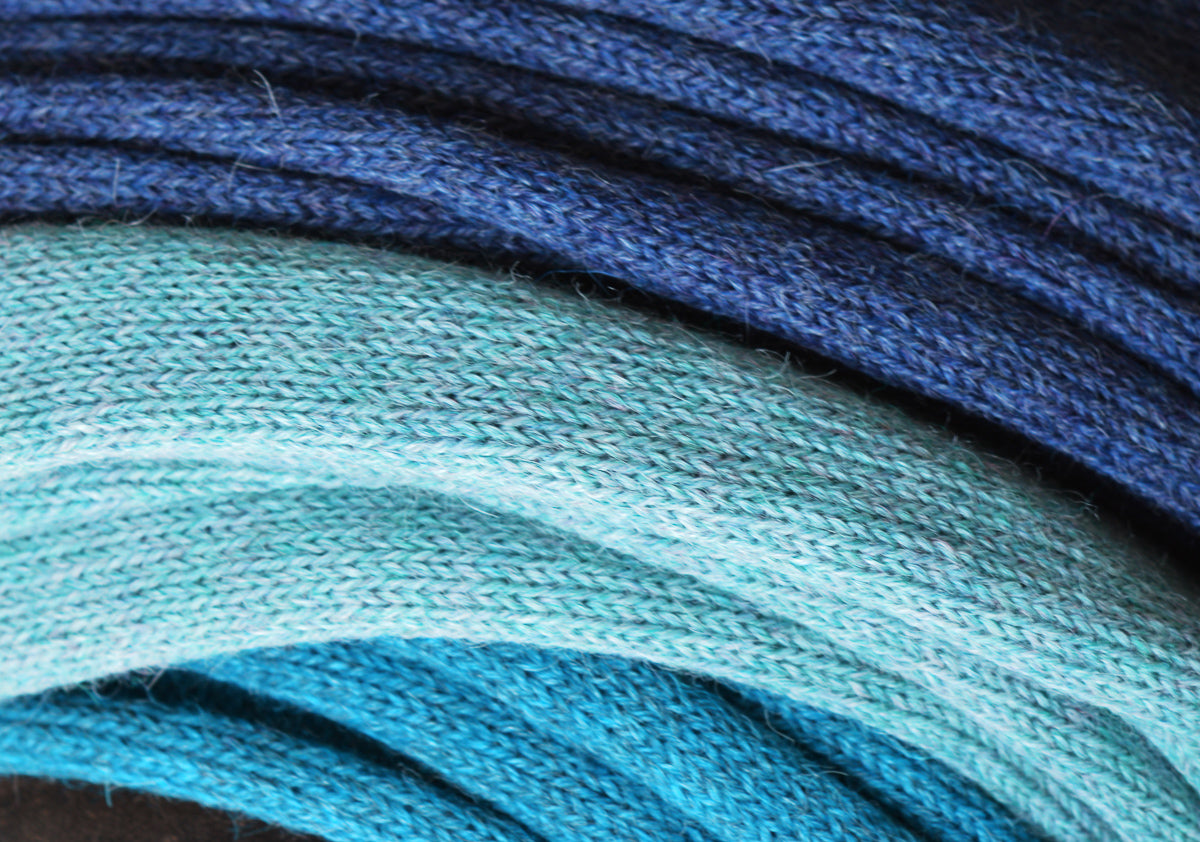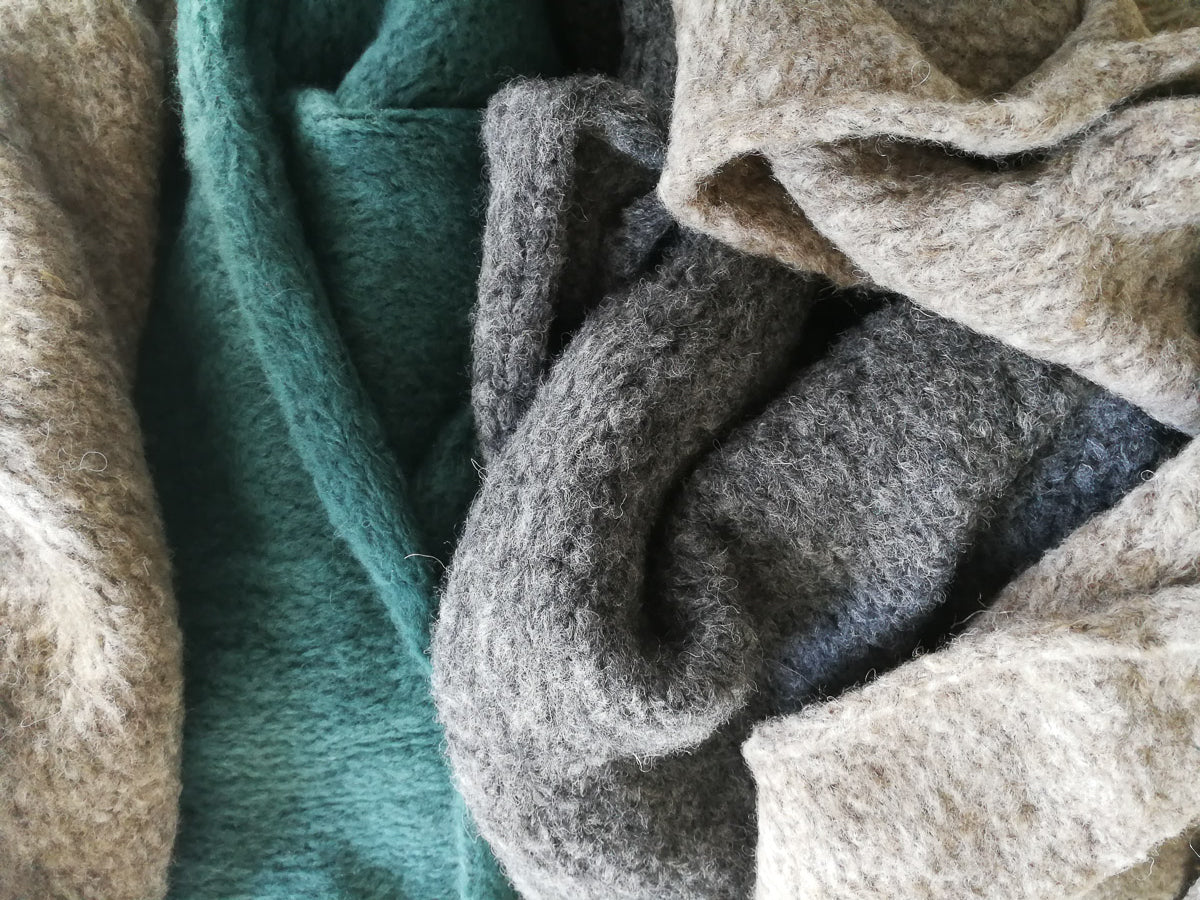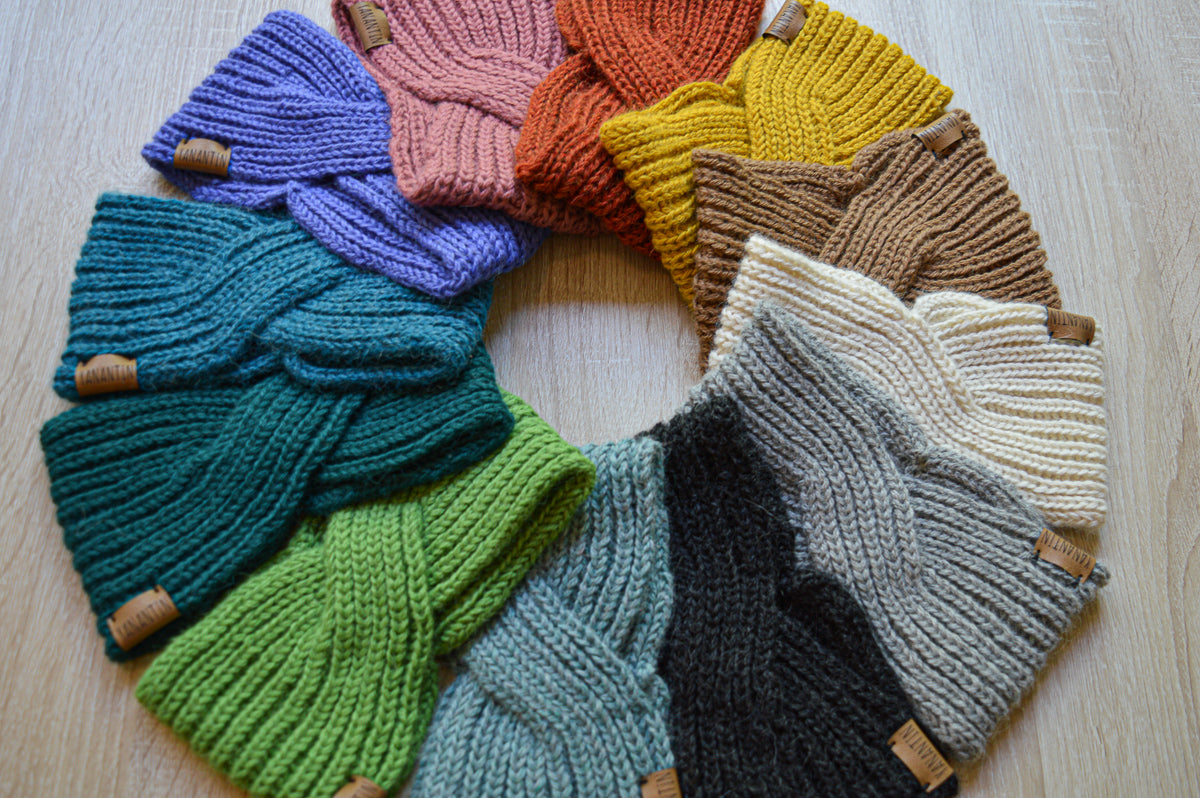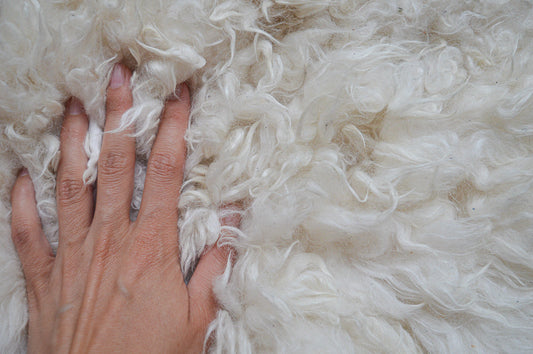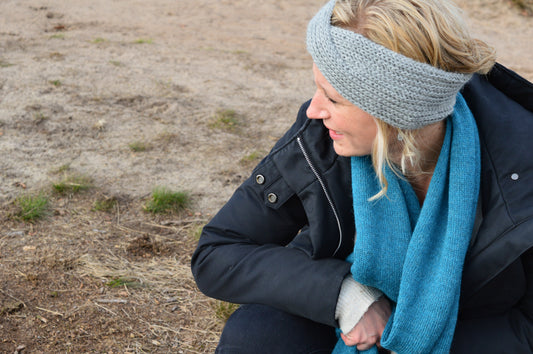As much as I love alpaca wool, it’s not all sunshine and rainbows. So, let’s look beyond the fluff: what are the disadvantages of alpaca wool?
Alpaca wool has several drawbacks: it may cause skin irritation, can be costly, and may require long-distance transport. Ethical concerns include inconsistent labor standards and questionable animal welfare. Additionally, the fiber requires careful handling and specific care.
However, I wouldn’t have started my own brand of ethical and sustainable alpaca wool products, if there weren’t some great solutions to each of the drawbacks. Let’s dive in, shall we?
Alpaca Wool Can Be Itchy
With their warm and fuzzy appearance, alpaca wool has to be soft, right? Well… Yes and no. While softer than many other types of wool, alpaca wool is not 100% itch-free for everyone.
The softness comes from its special fiber: small, smooth, and full of tiny scales that keep itchiness in check (defying the usual discomfort you’d expect from wool.)
It’s also hypoallergenic, which means that because of its low lanolin content, it’s even less likely to be irritating.
Still, two key factors determine whether alpaca wool will itch for you:
-
Your Level of Skin Sensitivity: Every skin reacts differently, and while most people will not experience itching with alpaca wool, those with sensitive skin may still feel discomfort.
-
The Quality of Alpaca Wool: The quality of alpaca wool directly impacts how itchy it feels. The finer the fiber, the less likely it is to cause irritation. The most commonly available quality of alpaca wool is Regular Alpaca, which is mild for most people, but not for all.
The Itch-free Solution: Baby Alpaca or Royal Alpaca
If you know that you have sensitive skin and can feel an itch from miles away, alpaca wool probably isn’t the right choice for you. Unless… You opt for a higher-quality grade like baby or royal alpaca, which are much softer and far less likely to cause any discomfort.
Baby alpaca is finer and softer than regular alpaca, and typically itch-free for most people. Despite the name, “baby alpaca” doesn’t come from young alpacas. Instead, it refers to the softest, finest fibers from the alpaca’s undercoat and prime cuts. Because of this, it’s still quite readily available, meaning that while it’s a bit more expensive than regular alpaca, it won’t break the bank.
If money isn’t an issue and you’re after a fiber that’s practically guaranteed to be itch-free, go for royal alpaca. Royal alpaca is the finest, softest grade of alpaca wool, offering unmatched luxury and comfort with virtually no risk of itchiness.
-
Pro-Tip: Our Baby Alpaca and Merino Wool Blend is beautifully soft. Wrap your self in real comfort.
Alpaca Wool Can Be Expensive
Alpaca wool is a luxury fiber, so it does come with a higher price tag. While it’s more expensive than synthetic fibers, it’s relatively affordable compared to other luxury options.
For context, a typical scarf from fast fashion may cost between $20 to $40, whereas an alpaca wool scarf usually ranges from $60 to $200, depending on size, design, and production.
Given its many benefits, alpaca wool is definitely worth considering as an investment.
-
To learn more about the factors behind its price, check out my article Why Is Alpaca Wool Expensive? to help you make an informed decision.
TLDR? Alpaca wool is a versatile, long-lasting superfiber that, with proper care, can last for years (or even a lifetime!)

The Budget-Friendly Solution: Invest in High Quality
Here’s a thought: if an alpaca wool item seems expensive, try dividing the price by 25. That’s about how many years you’ll enjoy it. Now, think about replacing a scarf every other year because it didn’t last as long. Does it still feel expensive?
Rather than seeing alpaca wool as pricey, consider it an investment. Yes, it may cost more upfront, but it’s built to last a lifetime. Surely, your wallet and Mother Nature will thank you for that!
Most Alpacas Live In South America
Alpacas are native to the Andean regions of South America, where Mother Nature has poured all her energy into making their fleece thrive through extreme temperature swings. From freezing cold to scorching heat, their wool is built to withstand it all. This is exactly why alpaca wool is so special.
While alpacas now live in places like the U.S. and New Zealand, most alpaca wool (90%) comes from South America, especially Peru. This means that alpaca products often need to be shipped internationally to reach your wardrobe.
With today’s demand for faster shipping and more frequent orders, the environmental impact of long-distance transport (especially international shipping) is significant, unfortunately.
The Slow-Fashion Solution: Buy Local, Buy Social, Invest in Quality
“Luckily” there’s a bunch of solutions to this problem:
-
Look for alpaca wool products that are produced and processed locally in your region. As alpacas are now raised in countries outside South America, such as the U.S. and New Zealand, buying products from these regions can help reduce the carbon footprint associated with long-distance shipping.
-
Rather than making multiple small orders, consider consolidating your purchases into fewer, larger shipments. This reduces the frequency of shipping and helps lower CO2 emissions. Check with a friend if they want an item too—great way to spread the word about your new favorite sustainable brand (which, obviously, is Yanantin Alpaca, right!?)
-
Choose brands that prioritize sustainability and positive impact in multiple areas. While shipping is one consideration, many brands go beyond by creating positive social impact, planting trees to offset emissions, and using eco-friendly production, processing, and packaging methods. If you're gonna buy something, make it last positively.
And obviously, opt out of fast shipping and let your alpaca wool item leisurely make its way to you.
Fair Wages and Honest Labor Are Not a Guarantee
Most alpaca wool products come from Andean countries like Peru, Bolivia, Chile, and Ecuador—regions still developing, where fair wages and ethical labor practices aren't always guaranteed.
In some areas, workers face poor conditions, long hours, and little compensation. Many lack official contracts, benefits, or pensions, with the average work week still running 48 hours, leaving only one day off. In rural areas, where most alpaca farming occurs, government oversight is limited, making it difficult to guarantee fair labor practices.
A Harsh RealityDuring my time in Peru, I witnessed firsthand the exclusion from the formal labor market. It was heartbreaking, but people had little choice: high demand meant that the moment you stood up for your rights, a hundred others would eagerly take your place. This experience inspired me to start Yanantin Alpaca: a social enterprise that empowers women through more-than-fair work opportunities. With a great salary, training, and flexible hours, we help women achieve financial independence.
|
The Social-Impact Solution: Support Social Entrepreneurship
Social exclusion and unfair labor practices are complex, and while governments, NGOs, and international organizations make efforts, they often fall short.
That’s where social entrepreneurship comes in.
-
Brands like Yanantin are leading the way, proving that business can drive meaningful change.
Social entrepreneurship is a game-changer. When organizations go beyond ethical practices (offering fair wages, reasonable hours, training, and healthcare), real positive change happens, creating lasting impact.
Before making a purchase, research the brand. Support those who are truly making a difference, ensuring their people are treated with respect and fairness. If they have something good to share, they will. If not, well, that speaks volumes, doesn’t it?
South America: Where Animal Friendly Isn’t Always Animal Friendly
When I visited rural communities in the Andes as part of my work, I often saw families with a small herd of alpacas right near their homes. The smaller the herd, the more loved the alpacas. One of my favorite memories is from a family who wouldn’t start eating until their alpaca had been served, too.
For the indigenous people, alpacas are more than just animals. Since Inca times, alpacas have been worshiped and are actually considered divine, praised for their superfiber. And, based on my experience, they still hold this special place in the local culture and daily life.

However, as the potential profitability of the alpaca fiber grew, some producers began scaling up their farming practices, paired with its unethical consequences. In extreme cases, this has led to crowded farms, overshearing, and rough handling.
While this isn’t the norm (small-scale farms make up around 90% of alpaca farming in Peru), it’s still something to keep an eye out for.
|
Small Alpaca Farm |
Medium Alpaca Farm |
Large Alpaca Farm |
|
<100 alpacas |
100 - 250 alpacas |
>250 alpacas |
|
90% of all alpaca farmers |
5% of all alpaca farmers |
5% of all alpaca farmers |
Source: CONACS (Consejo Nacional de Camélidos Sudamericanos)
The Animal-Friendly Solution: Choose Transparency
Any high quality alpaca wool producer knows that the best treatment of the alpacas results in a higher quality fiber. This means that ethical treatment, the right nutrition, the proper habitat, and optimized shearing techniques guarantee a better product. It’s a win-win.
When shopping for alpaca wool, look for brands that are transparent about where and how they source their fiber. Make sure they follow animal welfare standards (like RAS), so the alpacas are treated well. Small-scale farms are often the best bet, where animals are cared for properly.
-
My article How Is Alpaca Wool Made and Is It Ethical? dives deeper into the process of obtaining alpaca wool and how ethical it really is.
Alpaca Wool Requires Specific Care and Careful Handling
When I explain the washing instructions to my clients, I can see their smiles fade a bit. I can almost hear them debating whether it’s worth the effort. But then I share the real secret: with the right care, alpaca wool garments can last a lifetime. And just like that, the smiles return.
So, while it might be a bit of a tough pill to swallow, it’s totally worth a lifetime of love, fluff, and beauty. Here’s the deal:
Alpaca wool requires careful handling and specific care. But don’t worry—once you know the right steps, it’s easy to keep your garments looking gorgeous for years to come.
The most important takeaways:
-
Hand-wash only! No washing machines for your alpaca wool!
-
Alpaca wool takes time to dry: anywhere from 12 to 48 hours, depending on the garment.
-
It’s strong, but avoid sharp items and zippers to prevent tearing.
-
Moths love alpaca wool, so store it with lavender, mothballs, or in airtight containers.
-
Pills and fuzzballs can appear with friction and they need to be removed carefully.
-
Alpaca wool can stretch and lose its shape, so store your garments flat and be gentle when wet.
The Care-Free Solution: Alpaca Is Surprisingly Low Maintenance at the Same Time!
And here’s some more of the good news:
-
Alpaca wool doesn’t absorb smells.
-
It’s resistant to stains.
-
It doesn’t need frequent washing.
-
No wrinkles to worry about!
-
It holds its shape over time.
-
And if needed, it’s surprisingly easy to fix—no visible repairs!
And if you’re not up for the care routine, there’s always the option to dry-clean your alpaca wool garments.
Follow Our Detailed Instructions
You’re in luck once again! You’ve just found the ultimate resource to alpaca wool care. Here, at Yanantin Alpaca, you’ll discover all the ins and outs, the pros and cons, and all the fluffy details you need to keep the love for your alpaca wool everlasting.
-
https://shop.yanantin-alpaca.com/pages/washing-instructions-alpaca-wool
-
https://shop.yanantin-alpaca.com/blogs/caring-for-alpaca-wool
And your Video Library:



